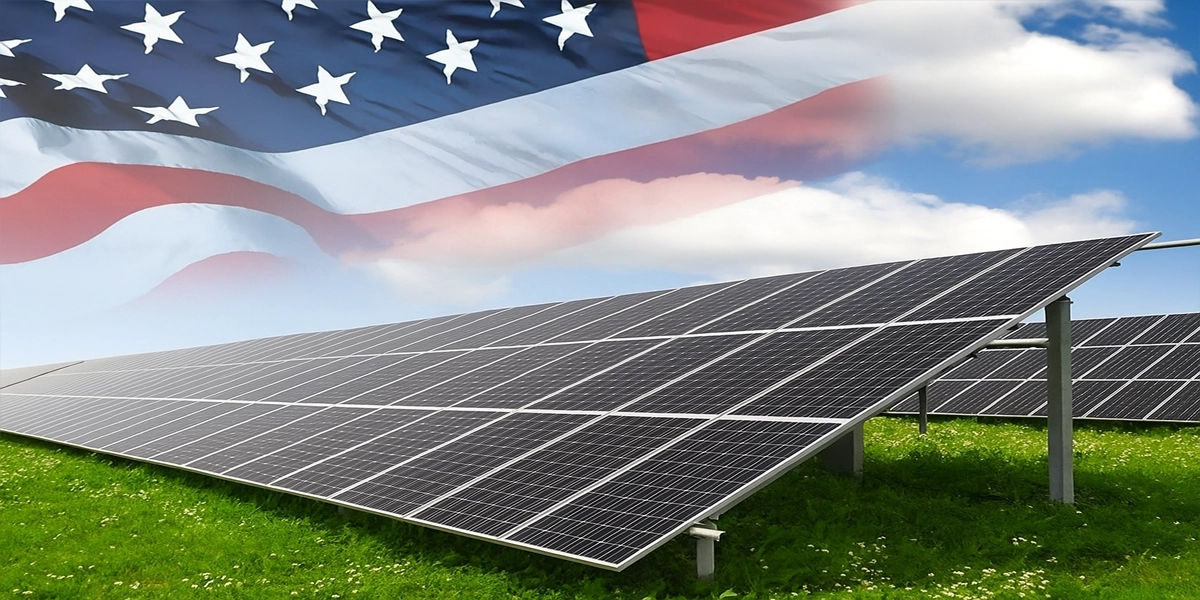
Solar panels made in the USA can reduce greenhouse gas emissions. A recent study by Cornell University says domestic production can reduce emissions by 30%. Moreover, this move can also reduce energy consumption by 13% by 2035. Homeowners who choose solar panel installation speed up clean energy goals.
The Study’s Key Findings
Cornell researchers studied the impact of local solar panel production from start to finish. This process is called life-cycle assessment. During the assessment, they found something important. In 2020, making solar panels locally could have reduced emissions by 23%. This is due to cleaner energy sources used in U.S. factories. In contrast, many overseas factories rely heavily on coal, which increases greenhouse gas emissions. Moreover, shorter shipping distances can help reduce the overall carbon footprint.
Furthermore, many people in the U.S. ask, how do solar panels work? They capture sunlight and convert it into electricity. However, the process of making them matters too. Researchers used a life-cycle assessment to measure every stage. This covers making, using, and disposing of panels. Also, people must also know the cost of solar panels continues to drop, making it easier to choose the best solar panels for their needs.
Why domestic production matters?
Most home solar panels used in the U.S. are imported, especially from countries in Asia. Between 2010 and 2020, Malaysia led the way by supplying 38% of modules. Vietnam followed with 21%, then Thailand with 17%, South Korea with 9%, China with 6%, and Singapore with 3%.However, these imports sometimes come from countries that still rely on coal to power their factories. As a result, the production process releases more greenhouse gases, which are not good. Switching to U.S. solar panel manufacturing would change that. Choosing to buy solar panels locally helps reduce greenhouse gas impact. Additionally, home solar panel production could improve supply chain stability. During global disruptions, locally made panels would still be accessible. This makes sure a steady supply for rapidly increasing clean energy demands.
Future Projections Show Strong Potential
A few years ago, the U.S. set a goal of generating up to 50% of its electricity from solar panels by 2050. At that time, solar provided only around 3% of the country’s electricity needs. Things are not the same today. As of early 2025, U.S. solar capacity has already passed 100 GW, up from 74 GW in 2022. Furthermore, the long-term goal is to reach 1,600 GW of solar capacity by 2050.
In order to reach that goal, domestic manufacturing of the most efficient solar panels is critical. Domestic manufacturing results in creating new jobs and strengthens energy independence and makes the supply chain more secure. Furthermore, local production uses cleaner energy. The U.S. grid is getting greener every year. This will shrink the carbon footprint of each panel. Local solar panel factories can produce the best solar panels. Domestic manufacturing uses cleaner power sources. Moreover, using local materials cuts transport emissions. For homeowners, this means your solar panels for home come with a lighter carbon footprint.
Boosting the Clean Energy Economy
The report suggests that a strong policy push can increase U.S. solar manufacturing. Legislation like the Inflation Reduction Act provides tax incentives for domestic clean energy production. This encourages U.S. people to build factories. As a result, new solar manufacturing plants have been built across states like Texas, Georgia, and Ohio. These factories don’t just cut emissions. They also create thousands of good-paying jobs. This push has opened doors for both skilled labor and innovation in solar technology.
Challenges Ahead
Building new factories for solar panels requires huge investments. To achieve it, the government must offer support and incentives. Moreover, the industry needs skilled workers. So, training programs should be launched.
What Industry Leaders Say
Experts see the local solar panel manufacturing as a win-win scenario. Experts note that while domestic production may slightly increase solar panel prices, the environmental benefits outweigh the cost. They value the long-term benefits of solar panels, like lower bills and a smaller carbon footprint.
To conclude, solar panels made in the USA can help fight climate change. With lower emissions, stable supply chains, and economic growth, the benefits are clear. As more local solar panel production increases, it opens the doors for new jobs and strengthens the economy. Furthermore, investments and policies should push local production forward. The future of clean energy depends on bold steps today.
News Source: PV Magazine
